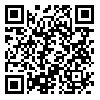BibTeX | RIS | EndNote | Medlars | ProCite | Reference Manager | RefWorks
Send citation to:
URL: http://jwmr.sanru.ac.ir/article-1-774-en.html
Land use change is one of the most important factors of global environmental change. So, understanding and predicting the causes, processes and consequences of land use and land cover has become a major challenge. The Remote Sensing and Geographic Information System (GIS) technologies can be used effectively to detect and quantify of land use changes and its effects on the environment. The purpose of this study is to evaluate the land use changes in Abolabbas basin in the period of 1990-2009 using remote sensing and satellite images. At the first step, Land sat satellite images have been used for the preparation the land use maps of 1990 and 2009. Then, satellite images were classified using a artificial neural network algorithm with fine accuracy in eight class of land use (rain fed farms, irrigated farms, rainforest, semi-dense forest, thinning forest, fair rangelands, poor rangelands and residential areas). The results showed that area of rainforest and semi-dense forest decreased during this period 8.48 and 12.26%, respectively, and have become to the thinning forest and rangelands that increased 10.39 and 12.35%, respectively. On the other hand, agricultural area (rain fed farms, irrigated farms) decreased 1.79% and residential area increased 0.19%. With regard to the land cover has changed in this period, these changes can have negative effects on the environment and natural resources, also natural disasters such as floods will increase.
| Rights and permissions | |
 |
This work is licensed under a Creative Commons Attribution-NonCommercial 4.0 International License. |




